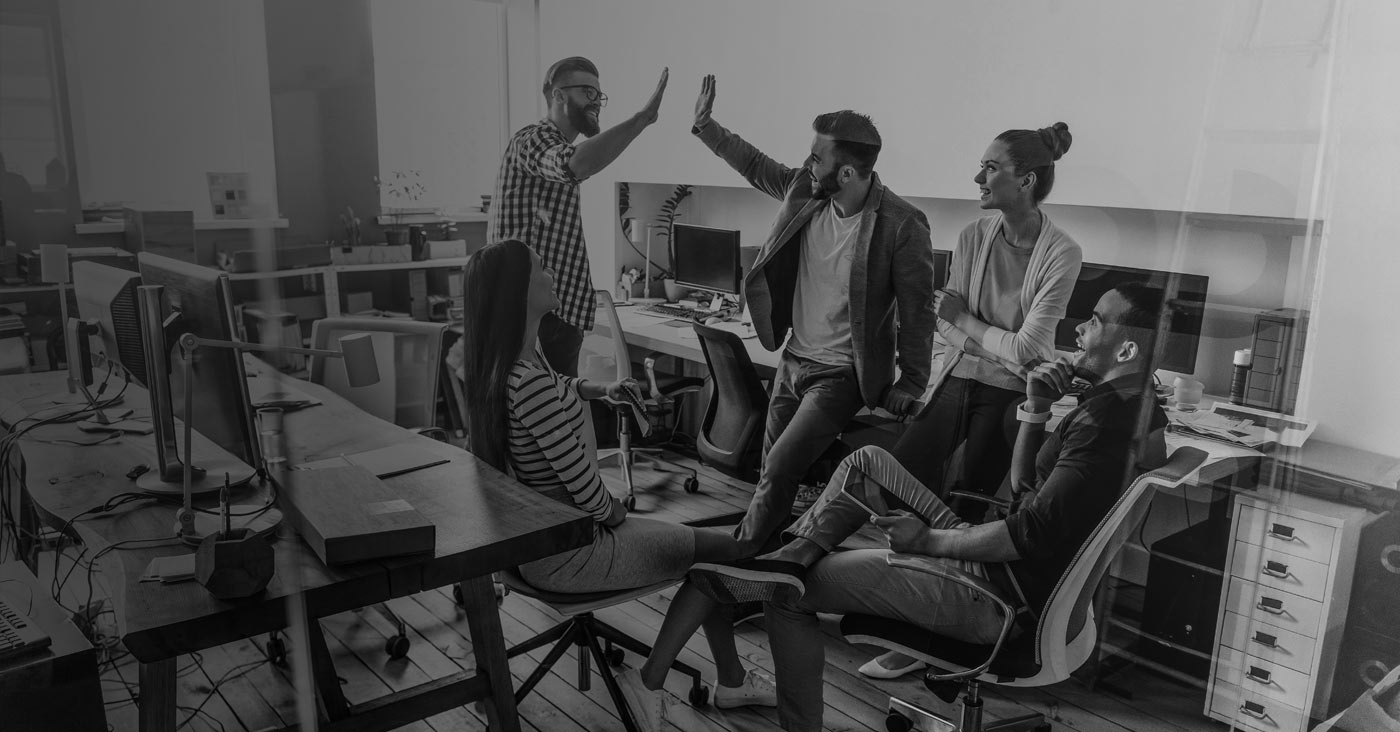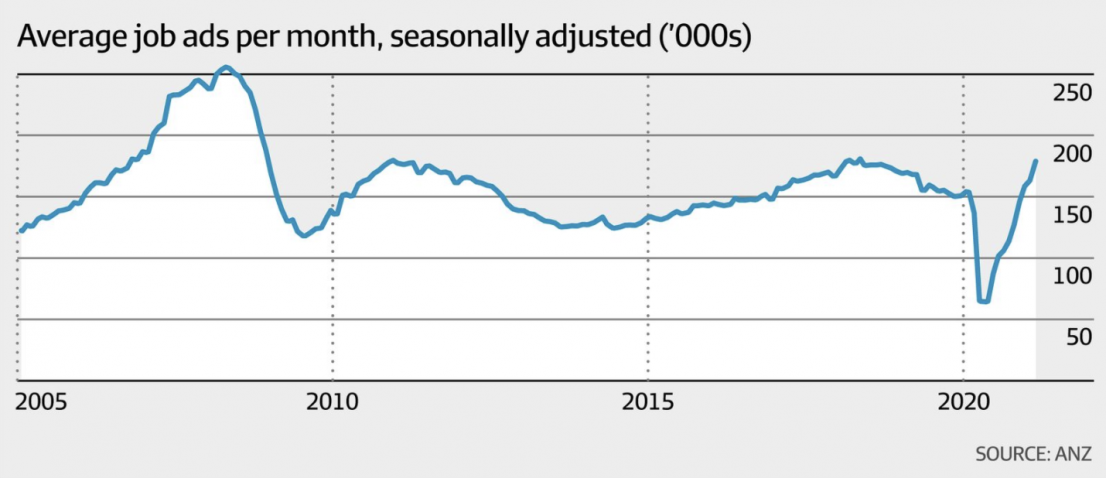
Everyone says 2020 has seen the world’s largest work-from-home experiment. As is the case with all experiments, sometimes you win and sometimes you lose.
In the 1970s, the concept of working from home was novel. Back then, it was called ‘telecommuting’ and it was introduced as a means to alleviate traffic congestion and the associated environmental impacts.
As the decade wore on, companies started turning to remote workers to swiftly fill skills gaps, and began touting the benefits remote work has for work-life balance. This coincided with an increase in dual-working families in the 1970s-80s.
As mobile technology advanced in the late 1980s and 1990s, along with an increase in knowledge workers, the practice became even more common. It was seen as a way to improve inclusive hiring efforts, allowing for employees living with a disability, for example, to increase their participation in the workforce.
By the 2000s, however, the concept started losing fans. Famously, in 2013 Yahoo CEO Marissa Mayer banned remote working for all employees, believing it impeded the company’s collaboration and innovation efforts.
In 2017, tech giant IBM followed suit. These influential shifts away from remote work divided many organisations into two camps: those for and those against.
Then 2020 happened and those who’d fallen out of love with the concept were forced to embrace it once again, resulting in a mix of experiences. Many organisations struggled to cobble together a virtual workplace while others were surprised with just how easy it turned out to be.
We’ve since seen a slew of media reports and research papers detailing how much employees love working from home. Productivity is booming. Rates of work-life balance have skyrocketed and employees are relishing their newfound sense of autonomy. If this is what they mean by ‘the new normal’ of work, we’re doing pretty well, right?
Well, many would beg to differ. For starters, some managers aren’t equipped to make the transition to remote work because they don’t know how to effectively manage a team that’s either virtual or a hybrid of in-house and remote employees.
On top of this, remote workers can easily feel sidelined, or as if their identities are shifting, as they struggle to delineate between their home and workplace identity.
Out of sight, out of mind
For every comment in praise of remote working, there’s a reason to be wary of its impending prevalence, says Dr Ruchi Sinha, a senior lecturer in the School of Management at the University of South Australia.
Cast your mind back to pre-COVID times – if you can – and think about the conference calls that were had around boardroom tables.
“People who were dialling into those meetings would join from a speakerphone in the middle of the table and everyone would forget they were there,” says Sinha. “That person was never able to jump into the conversation and contribute. Nothing has really changed – if there’s only one [virtual attendee] on a conference call, they’ll get ignored.
“We have a habit of exchanging non-verbal gestures with people in the room with us, but that doesn’t meet the inclusiveness criteria when some people aren’t physically there.”
All employees should dial in remotely, she says, even if some are in-house. She also suggests creating a rotating work roster, for those who are comfortable, so everyone has the same opportunities to build and develop their connections with their colleagues.
“Exposure to members of other groups improves your collaboration and cohesion with them,” adds Sinha.
Being co-located with others has also been proven to increase creativity and innovation amongst team members.
Research from 1998 shows that teams that met in person performed better on work tasks, followed by groups who worked virtually but met face-to-face initially. Teams that worked entirely virtually reported the lowest performance of all groups.
“Subgroups form based on many characteristics, such as gender, age, tenure and race. However, they also form based on seeing each other more often.”
Preventing an earthquake
Without putting structure around who works in-house and who works remotely, your organisation could end up inadvertently fostering what are known as faultlines and subgroups, says Sinha.
“Subgroups form based on many characteristics, such as gender, age, tenure and race. However, they also form based on seeing each other more often.”
When employees scatter into smaller groups within a team, the number of interactions between those groups decreases, she says. Subcultures can breed intergroup biases, meaning certain groups might prefer each other’s company or not cooperate as well with other groups. This can hamper productivity or cause conflict to arise.
“They’re called faultlines because the metaphor is that of an earthquake. These are the undercutting faultlines between subgroups. It’s the leaders and HR managers’ job to identify on which dimensions the faultlines are forming,” she says.
Sinha says remote work can breed favouritism through a theory called leadership-member exchange whereby leaders have an affiliation towards an ‘in-group’, and the ‘out-group’ is often left out of receiving key information or responsibilities.
This in-group/out-group dynamic becomes even more pronounced in a semi-virtual team, according to research published over a decade ago in The International Journal of Human Resource Management.
The researchers, Jane Webster and Kenneth Wong, surveyed employees in the IT department of a global company. Employees were divided into one of three groups: in-house teams, virtual teams and a hybrid of the two.
When assessing a variety of factors – such as communication frequency, trust and job satisfaction – the researchers found no significant difference in feelings of “group identity” between teams that were either entirely virtual or entirely in-house.
Hybrid teams showed the greatest disparity. When measuring the sense of group identity, remote workers within hybrid teams were the least likely to feel attached to the team’s group identity. Interestingly, in-house workers within those same hybrid teams were the most likely to feel involved. This could be a by-product of leadership-member exchange – these employees might receive preferential treatment, for example, consciously or unconsciously.
The upshot of this is that remote workers often miss out on important development and relationship-building opportunities. In the long run, this could deem them as less desirable candidates for promotions or salary bumps. This isn’t just an assumption; there’s research showing this is exactly what happens.
Stanford economist Nicholas Bloom’s 2014 research on remote work, which studied 16,000 employees at a Chinese travel agency over nine months, suggests that when employees work remotely, their performance increases by 13 per cent. However, they are 50 per cent less likely to receive performance-related promotion opportunities at work.
“Management is used to observing what people are doing and their behaviours, but you can’t do that anymore. Now you have to manage based on output, and that requires a very different mindset.”
Psychological safety is key
Sandy Staples, a professor at Smith School of Business at Queen’s University, did his PhD thesis on remote working back in 1994, and the issues he identified still ring true today.
Companies in the 1990s were trying to figure out how to enable and encourage their employees from afar, how to ensure they felt part of the company culture and how to facilitate collaboration between teams.
While Staples points out that technology back then wasn’t as powerful as we experience today (a point beautifully illustrated by the fact that we were having a seamless conversation from our respective homes in Australia and Canada), the fact that many of the remote work glitches of the 1990s mirror the challenges of today could suggest the practice is – and perhaps always will be – flawed.
One reason for this could be that many leaders have no template to reference. They’ve had to adapt quickly, and some have done a better job of that than others.
“Management is used to observing what people are doing and their behaviours, but you can’t do that anymore. Now you have to manage based on output, and that requires a very different mindset,” he says.
To encourage this mindset shift, Staples suggests HR and managers stop looking for signals and instead ask what they’re not seeing. “They should think about what’s not being shared with the team, and why? And if there’s anything management can do about it.”
Libby Sander, assistant professor of organisational behaviour at Bond Business School in Queensland, says HR professionals and leaders who are used to having delicate or tough conversations in person need to learn how to create that same sense of psychological safety in the virtual world.
“It’s really difficult because our brain is naturally looking for those unconscious cues around body language. When we have a screen in between us, most of that is taken away and our brains have to work really hard to try and discern those signals. The conversation doesn’t flow as easily.”
Psychological safety is key to making remote work a success, says Staples. He points to Google’s Project Aristotle – the quest for the ‘perfect’ team – to demonstrate this.
“Their conclusion was that the distinguishing characteristic of the most effective teams, when everything else is equal in terms of skills, etcetera, is if that team displays psychological safety,” says Staples.
Staples says the key to creating psychological safety in a virtual setting is having high levels of social sensitivity.
“That’s not just for managers, but everyone on the team,” he says. “This links in with some research that was conducted on remote work around 25 or 30 years ago which used the term ‘common ground’. If you can understand what’s going on in each other’s environments, you’re more likely to empathise with that person and not make any attribution errors.”
Put simply, when there’s no trust or empathy built into the relationship, we start making assumptions about people. For example, if someone is late to a Zoom meeting, we might think of them as unreliable or lazy.
However, if two colleagues have laid the groundwork to connect and understand each other, they might be more inclined to consider the surrounding context when a person is late. Maybe they’ve had trouble wrangling the kids that morning or they didn’t get much sleep the night before.
“You’re able to identify that this isn’t an internal characteristic of that individual [when trust is nurtured in the relationship],” says Staples. “Negative assumptions undermine our willingness to collaborate with each other.
The more we work together and understand each other’s environment, the less likely we are to make attribution errors.”
Identity crises
Not only does working remotely have the potential to curtail career development and quash innovation, it could also cause people to fundamentally question who they are.
Take a mother who works as an accountant, for example. The thing that might take her from feeling like a parent into a hard-working accountant could be the act of walking into the four walls of her office. In a remote work environment, that line is blurred, and so too are her various identities.
“We know that your personal identity, whether it’s at work or as a parent, child or partner, can affect your motivation,” says Sinha. “It can also affect how efficacious you feel and your confidence in your own skills.”
The key to regaining a sense of control over your identity, she says, is to understand if you’re a segmenter or an integrator.
“Work-life balance literature has found some people prefer to have integrated identities where they shift between things. Integrators mix the domains of their life and the different identities that come with them; they are all fluid with one another,” she says. “Segmenters, however, like to leave their parenting identity, for example, at the school drop-off in order to get into their worker identity.”
Managers should be having conversations about which category people fall into.
“This might be a conversation about how you prefer to structure your day to best align with being a segmenter or an integrator.”
Sinha also suggests managers help people to figure out where they sit by drawing a Venn diagram to understand and visualise any overlaps in their identities.
“Then they can say, ‘This is how much this currently overlaps, but this is how much I want it to overlap,’ so the employee and manager can talk about ways to solve any gaps,” says Sinha.
“We know that your personal identity, whether it’s at work or as a parent, child or partner, can affect your motivation.”
WFH: 2020 and beyond
We’re venturing into new territory and our old tools, processes and research might not hold up against the backdrop of a workforce that has been forced to operate in new environments and in new ways.
“People with different personalities in different types of work have different outcomes working from home,” says Sander.
“It’s convenient to believe a one-size-fits-all approach will work – for example that everyone will be happy to hot-desk – but that is just not the reality. The thinking that there is one ideal way to do things is substandard.”
She adds that a lot of studies about issues with working from home are now quite old and the technology platforms have advanced.
“I think we need to start thinking about remote work differently.”
Sinha says the way to do this is to wipe the slate clean and start afresh.
“HR professionals have to stop working on past assumptions. [Employers] should create an evidence-based intervention model by collecting data on some of these hypotheses that are currently being discussed about remote working,” says Sinha.
“There’s been a lot of research about flexible work arrangements, but it’s always about location and time. Now we need to take into account social connection, homeschooling children while working, boundaries around hybrid teams, etcetera.”
A simple way to start doing this is to have remote employees keep a diary.
“Get a broad section of your workforce – different demographics, ages, living situations – so you can better understand their experiences,” says Sinha.
She’s currently trialling this approach with an organisation in the hopes of gaining a clear insight into its inner workings and pain points.
For example, who has aging parents? Who has young kids? And how do those peoples’ experiences of work differ? She’s also asking questions about how often they take breaks, if they’re able to achieve their tasks for the day and if they feel their personal life is interfering with work, or vice versa.
“This is how you create an inclusive remote work approach,” she says.
The key is to move away from a blanket approach to remote work policies and learn how to cater to individuals’ needs and circumstances.
HR professionals will play a critical role in making this happen, says Sander. They’ll be charged with helping leaders and employees alike to hone their emotional intelligence and shift their thinking and approach to work, ensuring that even our virtual workplaces put people first.
“At the end of the day, if employees aren’t physically and psychologically comfortable, and if they don’t feel valued, then nothing else is going to work.”











